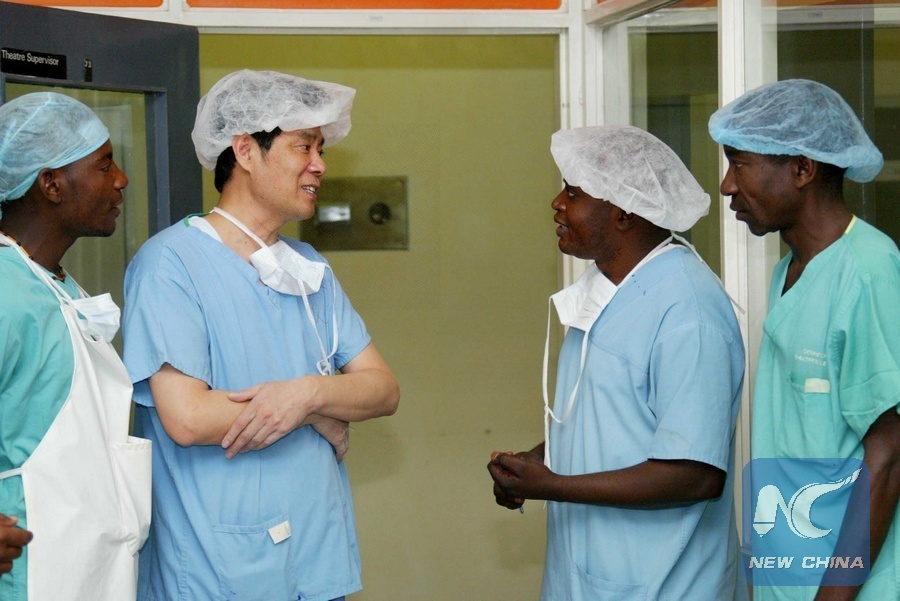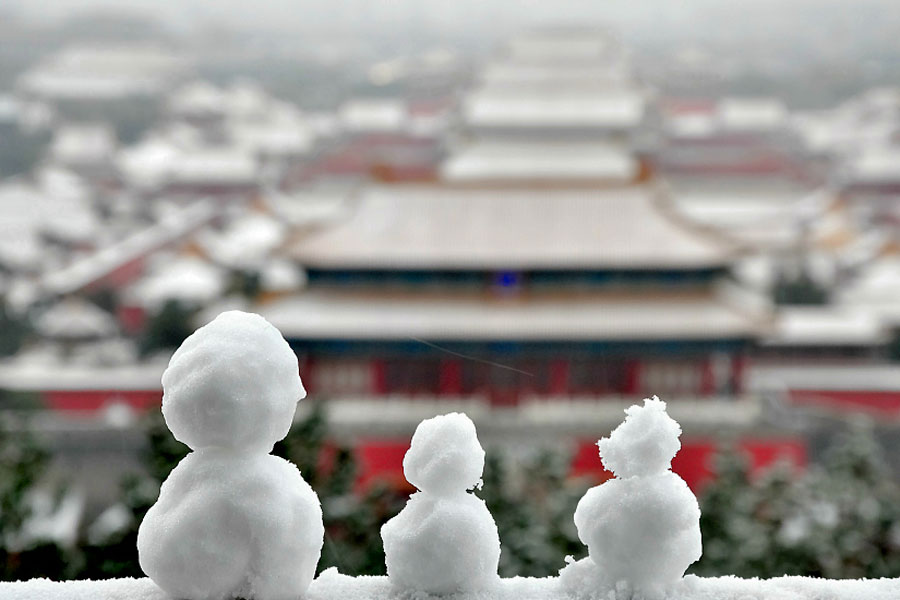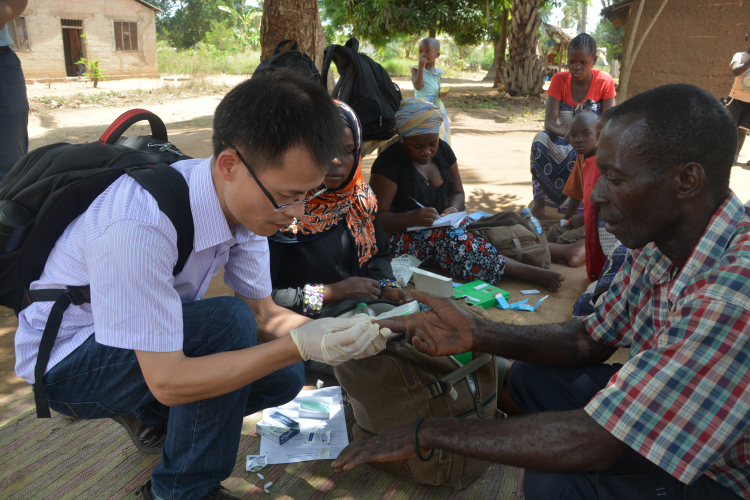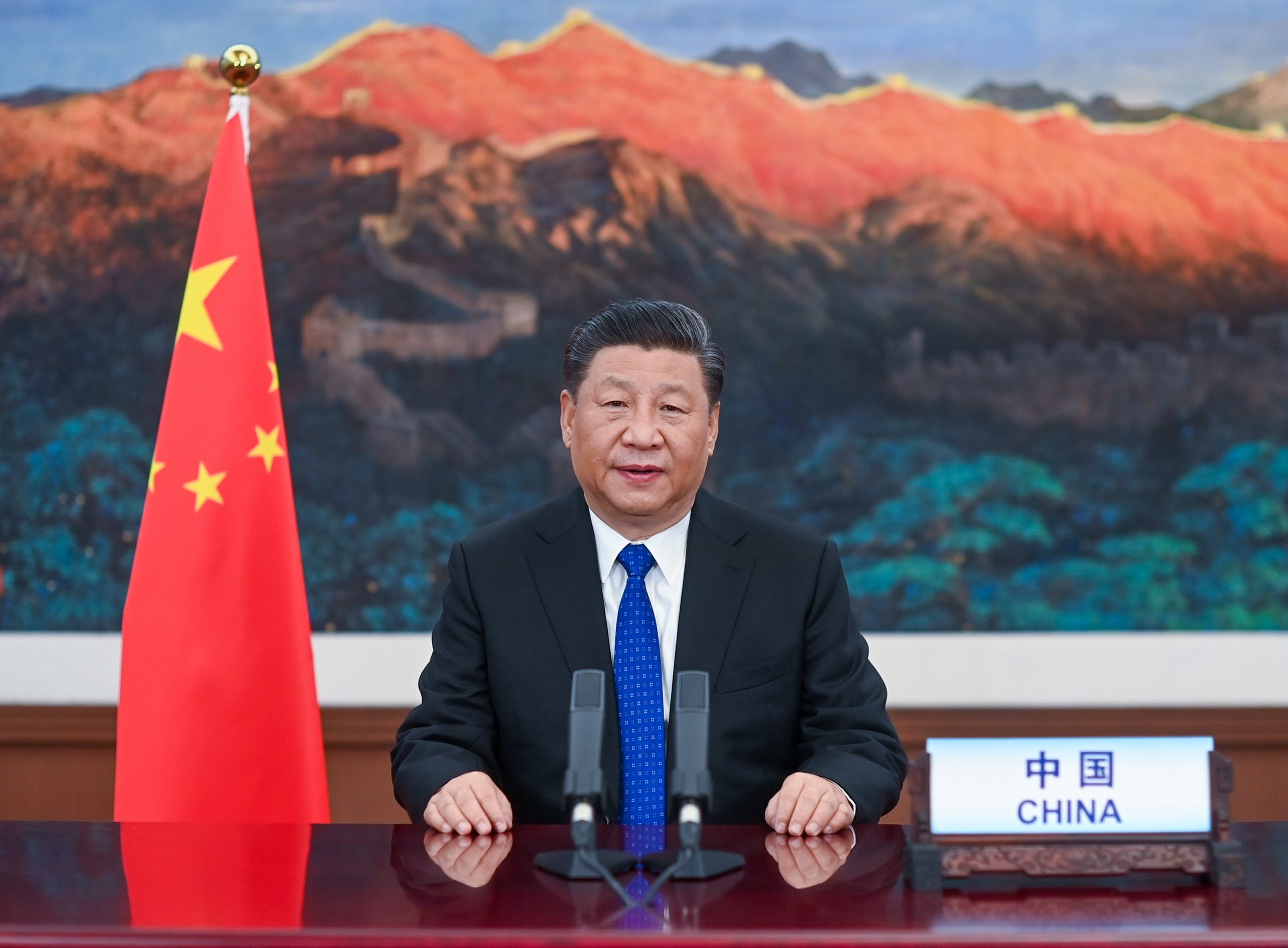
September 17, 2020 | By Zixiang (George) Zhou, Associate, Bridge Consulting| Chinese President Xi Jinping at the opening of the 73rd World Health Assembly, May 18, 2020. Source: Xinhua
Need for International Cooperation on COVID-19 Vaccine R&D, Production, and Distribution
- Making the COVID-19 vaccine a global public good will require international cooperation. China and the international community have benefited from cooperation on COVID-19 vaccine R&D, and will benefit from further cooperation in vaccine production and distribution.
- No country can realistically take on the challenges related to producing and distrusting COVID-19 vaccines as a global public good alone, thus a coordinated multilateral campaign involving every country is the only sensible solution.
- China should work closely with international organizations and partners to ensure equitable access to COVID-19 vaccines by all countries. It would be a mistake to attempt taking a bilateral approach with vaccine production and distribution.
On May 18, 2020, Chinese President Xi Jinping told the World Health Assembly at its virtual gathering that the COVID-19 vaccine when developed and deployed by China will be made a “global public good”. This was later echoed by Premier Li Keqiang at the virtual Global Vaccine Summit the following month. While there may not yet be a consensus on what exactly constitutes a global public good, in the case of the COVID-19 vaccine, it should mean that the vaccine must benefit all communities and nations, and that its distribution must not prioritize or be limited to a selected group of individuals or nations. This can only be achieved by international cooperation.
Why is International Cooperation Important?
Developing and producing a vaccine is an incredibly complicated process generally heavily reliant on international cooperation — be it for data, trial participants, raw ingredients, or manufacturing. The US, the most prolific producer of COVID-19 scientific research as of July 14, only produced 19% of total articles published (66,156) and 14% of preprints published (10,489). In addition, the risk attached to relying on manufacturers from one country is high. According to Gavi, the Vaccine Alliance, historically, vaccine programs that have not yet entered human trials have a 7% probability of succeeding, which rises to 17% once they enter human trials. Furthermore, just vaccinating one country’s population is not enough to protect that country and its population. Experts estimated that about 70% of the world’s population, or 5.6 billion people, will probably need to be inoculated to begin to establish herd immunity and slow COVID-19’s spread.
In short, vaccine nationalism will not work in today’s world, and countless people around the world would suffer if countries choose to distort the production and distribution of COVID-19 vaccines based on considerations other than public health. Instead, the world needs to work together to develop, produce, and distribute COVID-19 vaccines.
Holding up the ‘Global Public Good’ Promise
Despite its pledge, China’s participation in multilateral projects of this nature remains limited. Gavi, the Vaccine Alliance alongside WHO and the Coalition for Epidemic Preparedness Innovations (CEPI) launched in June the COVID-19 Vaccine Global Access Facility (COVAX Facility) in an effort to distribute COVID-19 vaccines equitably. According to WHO, as of August 24, 2020, 80 potentially self-financing countries have submitted non-binding expressions of interest, along with 92 low- and middle-income economies that are eligible to be supported by the COVAX Advance Market Commitment. As a donor to Gavi, China has already started talks with WHO and Gavi regarding COVAX, but has yet to formally join.
Many have also expressed concerns about countries such as China and the US using its domestically developed vaccines as political leverage to gain advantages in their dealings with other countries, which has been dubbed “vaccine diplomacy” by critics. More specifically, observers have pointed out that the Chinese government and vaccine makers have begun promising early access to countries of strategic interest to China such as Pakistan, Thailand, Myanmar, Vietnam, Laos, Cambodia, and the Philippines. Attaching conditions to COVID-19 vaccine supply agreements or using the vaccine to gain political leverage will hinder the world’s efforts to combat COVID-19, and at the same time, hurt China’s reputational interests.
This does not mean China has not cooperated with foreign companies, other countries, and international organizations. On the contrary, both China and its international partners have benefited tremendously from cooperation on vaccine R&D, but in order to deliver on its pledge, China needs to collaborate with the world more. Once a COVID-19 vaccine is approved, China can contribute to the global fight against COVID-19 by helping with the production and distribution of the vaccine and joining multilateral effort aimed at ensuring equitable access to COVID-19 vaccines, thus fulfilling its promise to make its COVID-19 vaccine a global public good.
How Have China and International Community Cooperated on COVID-19 Vaccine R&D?
China and the international community have cooperated on vaccine R&D in significant ways.
Sharing Scientific Findings. China has contributed scientific findings that support the international community’s effort to develop COVID-19 vaccines. Back in January, Chinese researchers published the genome sequence of SARS-CoV-2 to be shared globally. In addition, Chinese researchers have contributed a large number of scientific findings to the global scientific community. In the meantime, China has benefited greatly from findings made by scientists from other countries (Figure 1, 2).
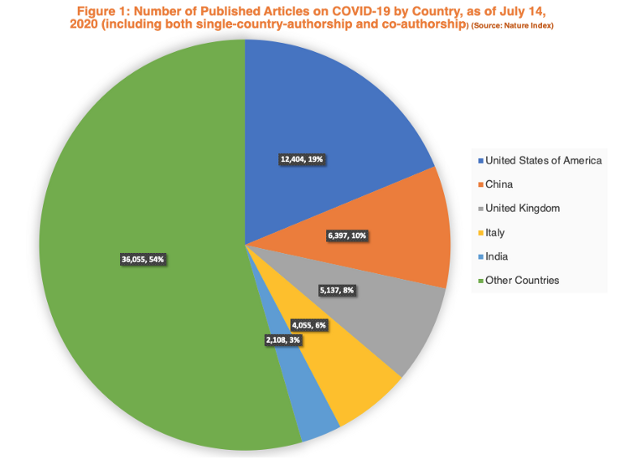
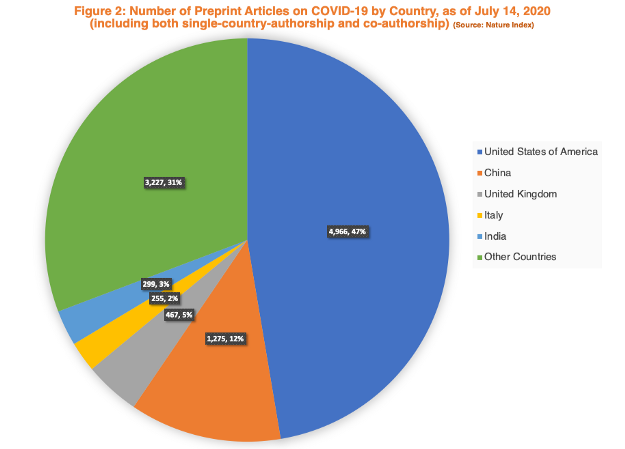
Vaccine R&D Cooperation. Research teams from China have directly worked with counterparts from several countries on at least 7 COVID-19 vaccines. All four Chinese vaccines in late-stage clinical trials are being tested in countries including Brazil, Indonesia, and United Arab Emirates with helps from local partners (Figure 5). International partners are indispensable to the testing of COVID-19 vaccines since Chinese COVID-19 vaccine developers cannot conduct late-stage trials in mainland China as the outbreak in the region has been largely contained.
Donations to/from International and Philanthropic Organizations. China has made donations to international organizations such as Gavi and WHO that are working on R&D of the COVID-19 vaccine. Private Chinese companies such as the Evergrande Group and TikTok have also provided funding for vaccine R&D and distribution. At the same time, international organizations have provided financial assistance to Chinese COVID-19 vaccine developers. For example, CEPI invested USD 69.5 million in Chinese vaccine developer Clover Biopharmaceuticals to bolster the testing of its COVID-19 vaccine.
How Can China Help with COVID-19 Vaccine Production and Distribution?
Developing and approving a COVID-19 vaccine is only the first step towards vaccinating the world against COVID-19. The production and then distribution of billions of doses of vaccines are yet another two challenges we must overcome collectively. China can offer its capacity and experience on both fronts:
Production. China can help with producing and supplying the world, especially developing countries, with the much-needed COVID-19 vaccines. China is a significant producer and consumer of human vaccines, and its vaccine regulatory authority has been approved and endorsed by the WHO. Right now the WHO is working with Chinese regulators on requirements for the international approval of any Chinese COVID-19 vaccines, which would clear the way for approval and use of Chinese-developed COVID-19 vaccines by other countries. Developers of all four Chinese COVID-19 vaccines that are in phase 3 clinical trials are building or have built production facilities that can manufacture up to 800 million doses per year (Figure 3), with plans to further expand their production capacity. As of July 23, 13 Chinese companies have already started constructing production facilities for COVID-19 vaccines, of which nine have been approved for clinical trials.
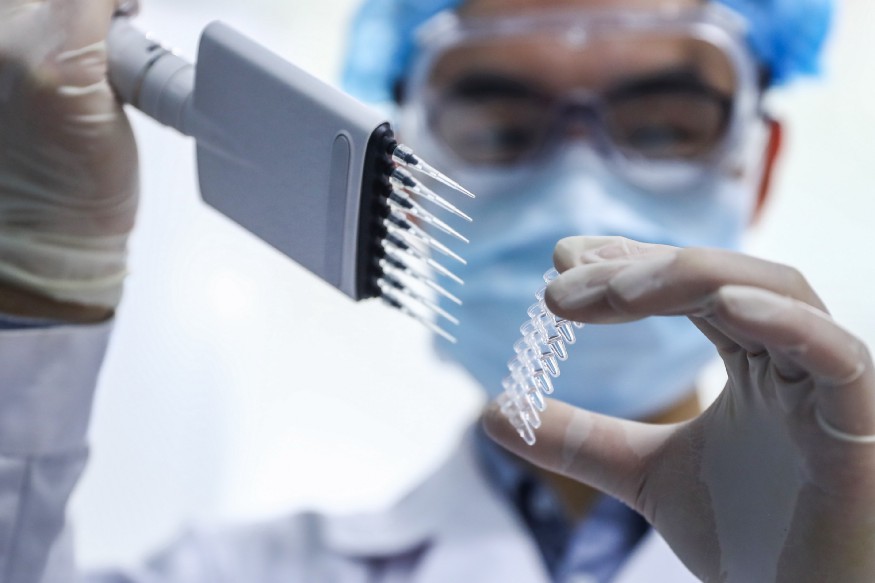
Distribution. The storing and packaging of vaccines, cold chain logistics, and shipping are all important components of vaccine distribution. So far, the various COVID-19 vaccines that are in clinical trials require different transportation and storage conditions, making the distribution of COVID-19 vaccines an even more difficult task (Figure 4). China has the capacity to help in three areas:
- Technology and Equipment. For example, Gavi recommends solar refrigerators for vaccine storage in areas with less than eight hours of electricity per day. Chinese cold chain equipment provider Qingdao Haier Biomedical Co., Ltd. has worked with organizations such as WHO, Gavi, and UNICEF to install solar panels and solar refrigerators to store vaccines in remote areas with electricity shortage.
- Experience. Chinese companies have accumulated substantial experience in developing innovative vaccine logistics solutions. For example, on January 1, 2020, Chinese logistics firm SF Pharmaceuticals launched a “one-stop” supply chain service which covers the entire vaccine logistics process from the transportation of raw materials to distribution of finished vaccines, stretching all the way from the coastal ports to remote mountain areas thousands of miles away.
- International Logistics. China’s logistics assets can also help with the distribution of COVID-19 internationally. For example, Chinese cold chain logistics companies have established cold chain flight routes between China and African countries such as Kenya and Ethiopia in order to import fresh flowers that have to be transported in a short period of time and within a certain range of temperatures. Such operations could be repurposed for the transportation of COVID-19 vaccines. The Chinese government’s logistics capacity can also help with vaccine distribution in line with its contributions in the battle against the 2014–2016 Ebola Outbreak in West Africa.
China has much to offer on these fronts, though not without limitation. China needs international cooperation to accomplish both tasks. China still needs, for instance, to import raw materials and equipment to manufacture COVID-19 vaccines. Analysts estimated that “just providing a single dose to 7.8 billion people would fill 8,000 Boeing 747 cargo aircrafts,” and China only has 173 cargo aircrafts as of March 29, 2020. Without a global coordinated strategy, it would be impossible for people around the world, especially those living in developing countries, to receive COVID-19 vaccines in a timely fashion.
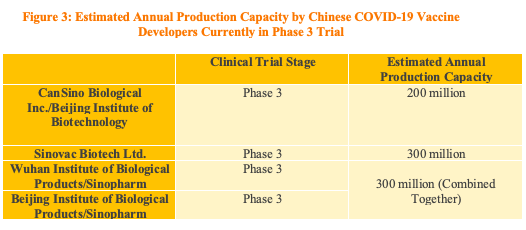
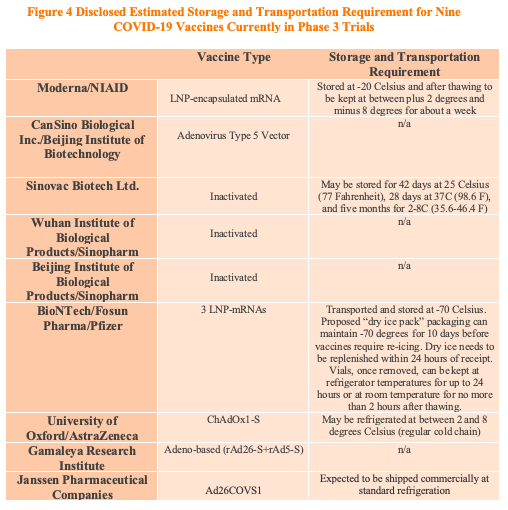
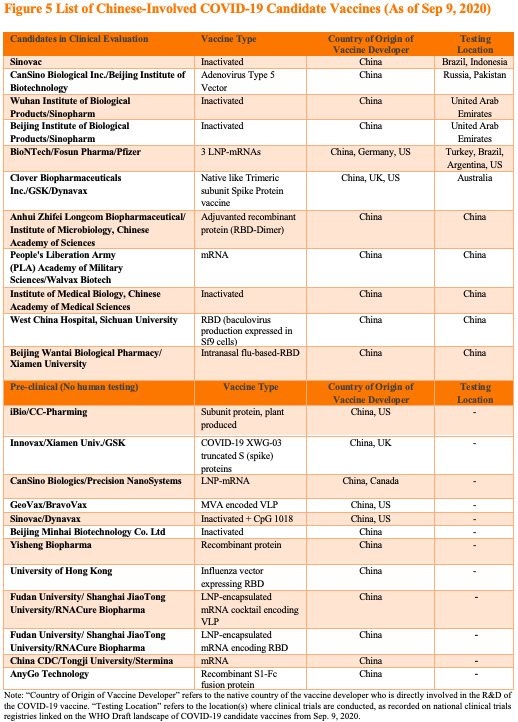
Efforts to make COVID-19 vaccines a global public good should thus not be hindered by political considerations, desire for monetary gain, or vaccine nationalism. The international community will need to guard against the dangers of politicizing vaccine production and distribution, which would turn the COVID-19 vaccine from a global public good to yet another leverage in geopolitics. There may never be a silver bullet that can magically end the pandemic and bring back ‘normal’ life as we knew it, but what we can do is push for a coordinated global effort towards making remedies available as a global public good. China should abandon its worst instincts, act responsibly, and participate in such global efforts more actively — as should every other country.
About The Author
Zixiang (George) Zhou
Zixiang (George) Zhou is an experienced international relations and development professional who has worked in Washington DC, Nairobi, and Beijing. Find George on LinkedIn.

